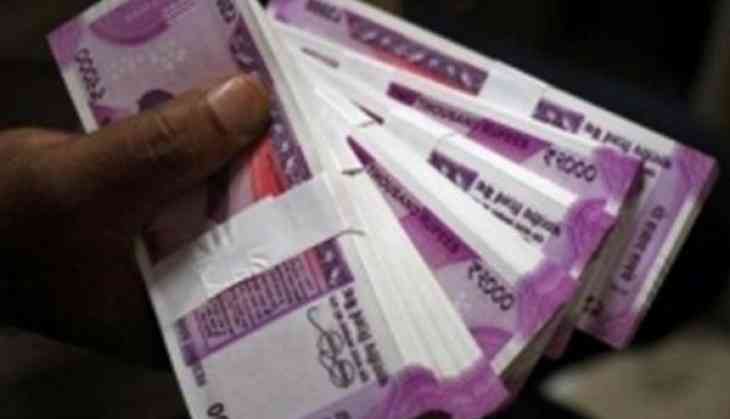Investment, infrastructure can spur development in India

There are no two opinions that not only in the current but in the coming century, the world economy will revolve around Asian countries, especially India and China.
In this regard, China, while expanding its economy, is engaged in a tough competition in the region. In the last few years, India has emerged as a strong country in the global economy.
With USD 2.8 trillion, India has become the seventh largest economy in the world. In the fourth quarter of fiscal year 2017-18, India's economic growth rate has been 7.7 percent and in 2018-19, it has been estimated to be around the same. This reflects its strong economy.
A foreign exchange reserve of more than USD 400 billion tells the golden story of the Indian Economy; the World Bank's Business Facilitation Report rose 42 places in 2018. India's joining in the top 100 introduces the picture of its strong economy.
In the last few years, India has made several important decisions to enhance business facilitation, including eliminating delays in approvals for projects and eliminating bottlenecks of bureaucracy and red tape.
Apart from this, India has now started promoting PPP i.e. Public-Private Partnership model, Infrastructure Debt Fund and Infrastructure Investment Trust to maximize funding of basic infrastructure facilities.
India's strong economy has attracted the attention of the world. India's acceptability on the international stage has increased. This is the reason why China did not object when the Asian Infrastructure Investment Bank provided the largest fund of USD 1.3 billion to India, despite a tremendous border dispute.
India has prepared itself for greater foreign investment. For this, the emphasis is on strengthening the infrastructure. India has stressed on promoting connectivity at all levels of water, land and air. The objective of the Bharatmala Pariyojana is to improve road connectivity by building national corridors and highways.
The Sagarmala Yojana can be described as a 'blue revolution' as it includes the port-led and coastal lines development. Apart from this, internal trade will be promoted through inland water transport from the water route development project, which will increase the capacity of shipping on national water routes.
At the same time, continuous emphasis is on developing dedicated cargo corridors for the railway network in the country. On the other hand, the UDAN (Ude Desh ka Aam Nagrik) Yojana is also working on the development of regional airports along with the plan to provide better and cheaper air connectivity.
In the last few years, India has also got its hold in the field of renewable energy. While coal-based conventional energy is expensive, it is also harmful for the environment. So, solar power can prove to be the best alternative. India has set a target to ensure capacity addition of 175 gigawatt renewable energy by 2022. This will include a capacity of 100 gigawatt solar power.
India has given priority to the International Solar Coalition to bring solar energy into mainstream and increase mutual cooperation for it. The establishment of this alliance was held in New Delhi in the beginning of this year. Considering the objectives of the Paris Climate Change, it has been said that the choice of solar energy is given priority based on priority. For this, by the year 2030, the target of achieving 1000 gigawatt of solar energy through a trillion US dollar investment has been set.
In the last decade, competition in the area of internet connectivity in India has also increased tremendously. Currently, more than 460 million Indians use internet and around 1.2 billion mobile phones are being used. The government has given special initiative in this field to promote digital payments under the Digital India program.
T
hrough this, more than 100 public utility services are being made available to the citizens of the country through their mobile phones. Apart from this, the government is trying to promote e-business and create a better environment for innovation so that the youth can be motivated to start their own business.
The effort made by India in the field of investment and infrastructure reflects its commitment to sustainable development goals. India has been giving priority to completing 100 percent of the 17 targets set by the United Nations in the year 2030.
Under this, SDG 9states - Build resilient infrastructure, promote inclusive and sustainable industrialization and foster innovation; Target 9.2 states - Promote inclusive and sustainable industrialization and, by 2030, significantly raise industry's share of employment and gross domestic product, in line with national circumstances, and double its share in least developed countries; Target 9.4 states -
By 2030, upgrade infrastructure and retrofit industries to make them sustainable, with increased resource-use efficiency and greater adoption of clean and environmentally sound technologies and industrial processes, with all countries taking action in accordance with their respective capabilities.
To fulfill this goal, India is constantly pushing for investment and infrastructure strengthening.
In 2015, more foreign direct investment (FDI) was invested in China and America than in India. This is just the beginning. However, still there is a challenge to increase poverty, starvation, primary education, gender inequality and infant mortality in the country. Removing which should also be a priority.
These issues are included in the basic rights of life, which is essential to reach the primary list of infrastructure. Otherwise, there will be no delay in getting two pictures of the same India.
The views expressed in the above article are that of Shams Tamanna of Charkha Development Communication Network.
--ANI

